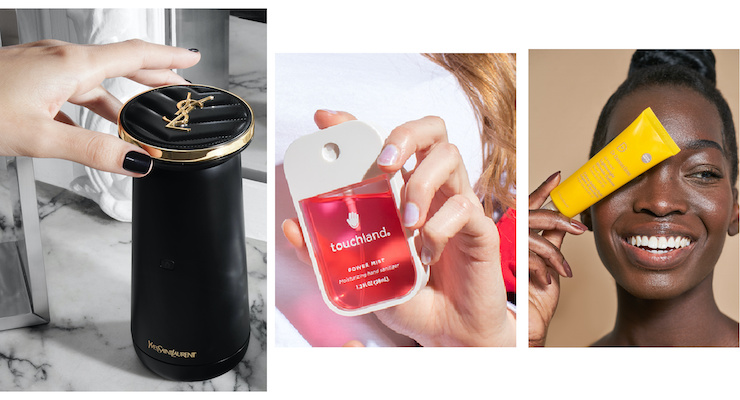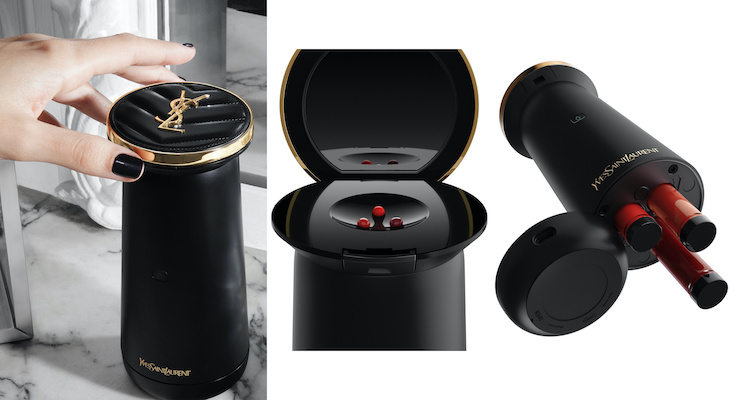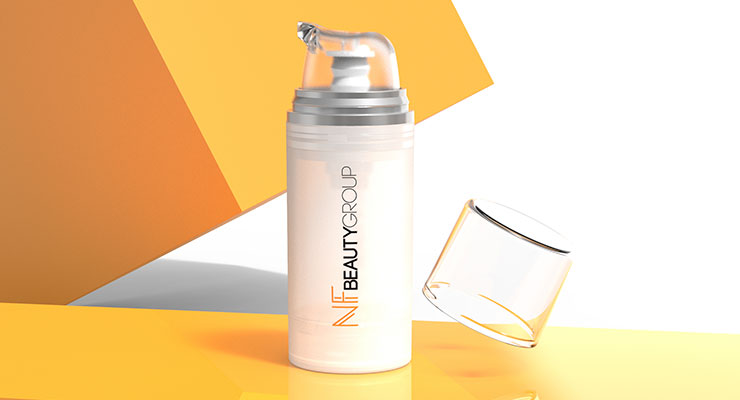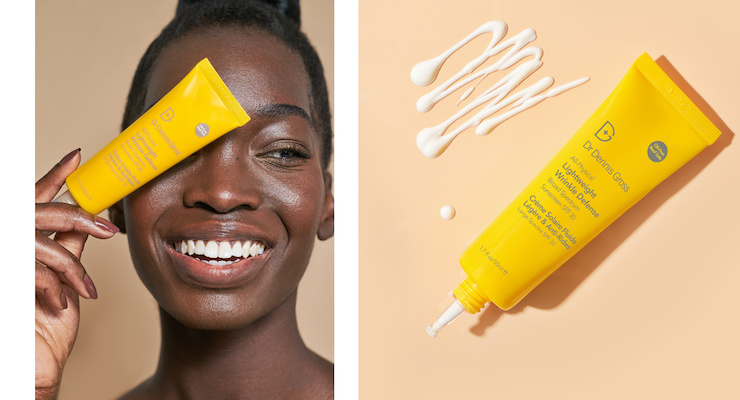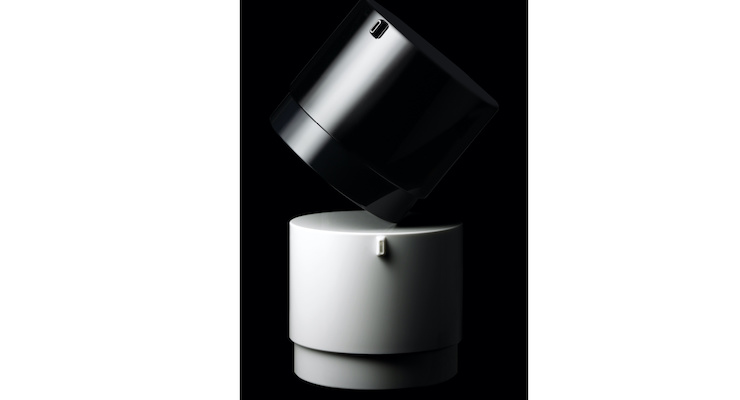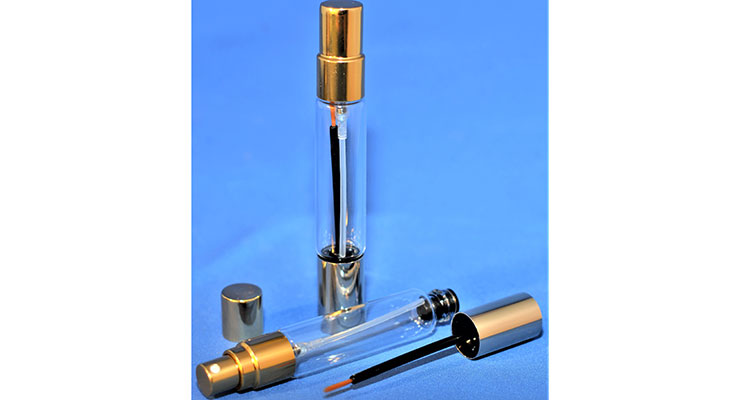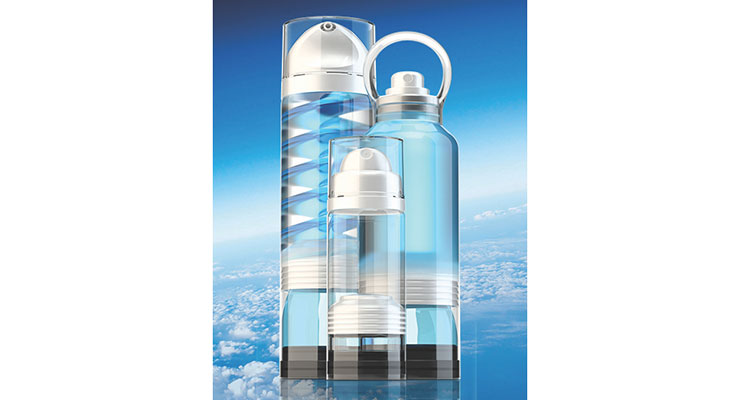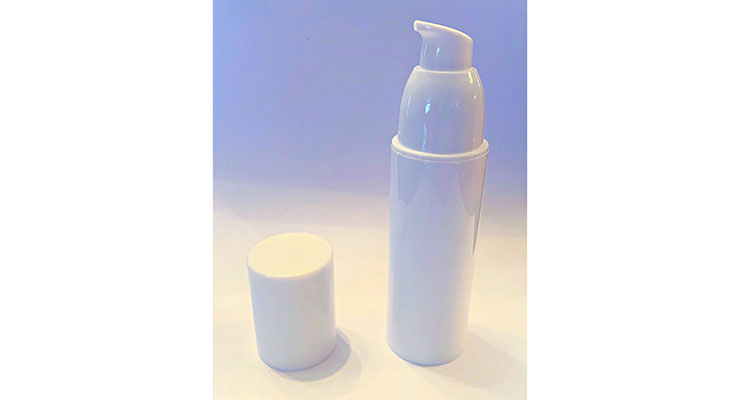Marie Redding, Senior Editor03.01.21
Dispensing systems are key for any package, and transform the way a product is applied. There are bottles and jars with airless pumps, misters, foamers, tubes with applicator tips—and more.
The type of dispensing system a brand chooses adds functionality to skin care, hair care, fragrance products and even color. The team at L’Oréal has now come up with a way to dispense lipstick on-demand.
Since the Covid-19 pandemic has changed consumer habits, Hana Innovation’s team says it has affected packaging, including dispensing. “The need for more hygienic dispensing applications is growing. We see a rising demand for dispensing jars and other types of pumps, for products that were previously in packages with more simple closures,” explains Renaud Baker, general manager, Hana Innovation America.
According to Future Market Insights’ (FMI) report, the demand for airless dispensers is rising due to concerns over contamination and hygiene. “The market is witnessing a surge in demand for airless dispensers due to the consumer’s growing awareness of how crucial it is to use uncontaminated products,” the report states. “As a result, the demand for prestige cosmetics and skin care products equipped with the advanced functionality of airless dispensers is also on the rise.”
What other types of dispensers are popular? “Trigger pumps are leading the market in terms of product type,” according to analysts at FMI. “However, the mist spray pump segment will dominate by the end of 2030,” the report says.
All industries use pump dispensers, but the cosmetics and personal care markets accounted for over 30% of the spray pump market overall last year, according to FMI. The market for pumps and dispensers is forecasted to grow at a CAGR of 4.3% through 2030.
Pairing the Right Dispenser & Product Formulation
The dispenser you choose has to be compatible with your product’s formulation. “It’s often more complicated than aesthetics,” says Joyce Kim, purchasing coordinator, NF Beauty Group (Nest-Filler). “Your formula determines the most efficient dispenser because a product’s viscosity is a major factor,” she says. “For airless packaging, for example, viscosity directly correlates to the amount of pressure that is needed to raise the piston in an airless pump,” she explains. (Take a look at the company's airless jars in this video.)Richard Esterbrook, director of sales, The Penthouse Group, also emphasizes the importance of considering the viscosity to determine the type of dispenser best suited for a product. “We customize our dispensing systems for optimum performance based on viscosity and product performance,” he says.
The supplier’s R&D team, based in Japan, helps advise beauty brands to ensure they choose correctly. “It is a great advantage to a brand to send us their formula, including specifications such as centipoise readings. Our lab performs evaluation and compatibility testing,” explains Esterbrook.
Viscosity, however, is sometimes not the only consideration, according to Hana Innovation’s Baker. “It is a misconception that product viscosity is the sole consideration for the functionality of a lotion pump,” he says.
“While viscosity plays an important role when testing a pump system, a product’s ingredient list is equally important, especially if there is a high level of natural ingredients, mineral oils or pigmentation,” he explains.
Dispensing Lipstick on Demand
Guive Balooch, global vice president of L’Oréal Incubator, along with his team, created a way to dispense lipstick on-demand—and Yves Saint Laurent is the first brand to use the technology.YSL’s Rouge Sur Mesure Powered by Perso, a beauty tech innovation and AI-powered device created by L’Oréal’s Technology Incubator, is available for pre-order, and begins shipping to consumers in the U.S. this spring, followed by a global launch in September.
The device sits on a dresser, and users can choose a custom color in L’Oréal’s app. Press the top of the device to dispense YSL Velvet Cream Matte Finish lipstick, and apply it with a brush.
Customized motors inside the device allow the formula, in cartridges, to dispense upward into an airtight compact. The compact detaches to fit inside a purse. “The device was challenging to engineer, due to the fact that lipstick is viscous. We spent two-and-a half years perfecting the way it works,” Balooch explains. “As soon as the lipstick dispenses, a valve closes so there is no leakage,” he says.
L’Oréal’s shade match and color science algorithms ensure that the device is useful and not just a gimmick. “Our mission is always to use ‘beauty tech’ to solve problems and make people’s lives better,” says Balooch. L’Oréal has over 35 patents on this innovative design.
A Dispensing Tip on a Tube
Airless dispensing systems are still considered the “gold standard” and are always in demand for skin care, but some products don’t require it. When a product dispenses through a cap, dropper pipette, or specialized tip on a squeeze tube, it makes application easier.The team at Dr. Dennis Gross Skincare recently chose a tube with a dispensing tip that offers the right type of functionality for its formula.
All-Physical SPF Lightweight Wrinkle Defense SPF 30, which launches at Sephora.com on March 16th, is in a custom color-matched yellow tube with a pipette-style dispensing tip. The reef-safe formula isn’t air-sensitive. The physical sunscreen sits on the skin’s surface, and contains nano-zinc filters, which ensure it won’t leave a white cast even on dark skin tones.
“Zinc tends to leave a white cast. Nano-zinc filters allowed us to achieve the blendable consistency we were looking for in our formula,” says Michele Snyder, the company’s senior vice president of marketing.
Hand Sanitizer Becomes a Beauty Product
The type of dispenser a brand chooses can increase a product’s functionality and elevate a package, whether it’s makeup, skin care, haircare, fragrance—or even hand sanitizer. The pandemic is fueling the “hand hygiene” category’s growth, and some say it’s crossing over into beauty. Several new brands are marketing hand sanitizers in stylish packaging.“The demand for pump dispensers has surged considerably in response to the increasing sales of hand sanitizers,” states FMI’s report. Forecasters say sales of hand hygiene products will continue to fuel market growth.
Touchland Power Mist hand sanitizer, which launched at Target last September, was the first hand sanitizer to dispense as a mist when it first debuted in Barcelona nearly a decade ago.
The way the package feels in the hand and sprays provides users with an upscale experience. “We tested every aspect of the dispensing system, as the spray pattern is a key element of our product,” says founder and CEO Andrea Lisbona. “We selected a fine pattern mist that creates a nebula effect when you apply the sanitizer to the palm of your hands,” she explains.
Touchland Power Mist is in a recyclable PETG bottle with an ABS frame. Its colorful eye-catching design is no doubt helping fuel its success. The brand’s videos have gone viral on Instagram and TikTok, and there were more than 34k consumers on its waitlist last year after selling out. The company also produces a sanitizing station for retailers. “2020 was a record year for us,” says Lisbona.
Functional Designs for Airless Jars
‘Push-down’ airless pumps on jars make them more hygienic. “The cosmetics market has always needed packaging that protects products from the risk of possible contamination, and this particular need has become even more relevant with the pandemic,” says Romualdo Priore, marketing director, Lumson.Lumson’s airless systems (jars and bottles), renamed Touchless, highlight safety features and product purity. The portfolio includes Envers, an airless jar combined with a dispensing system.
Lumson says they “reinvented” the classic jar with Envers. “It gives a jar new meaning—it is revolutionary and relevant to today’s world,” says Priore. Envers features Lumson’s Touchless airless system and a pouch enclosed within the jar maintains the purity of the product.
“Envers was the first airless system to give new functionality to packaging, due to its unique ‘on-off’ closure and a push-down system,” says Priore, adding, “It is a completely new and practical dispensing method, and offers consumers a safer solution.”
Other suppliers also offer airless jars with “push-down” pump dispensers. “The push-down airless dispenser has become very popular,” says The Penthouse Group’s Esterbrook. “We refer to the style as a ‘functional innovation,’ because it is incredibly convenient. We have even molded the orifice in the shape of a customer’s brand logo to enhance the experience further,” he says.
The Penthouse Group supplies its push-down jar, with a twist—called the twist piston jar, for Yoshino’s Cle de Peau and Fancl brands in Asia. “Rather than pushing down on the top of the jar, the user twists the actuator, which activates the airless piston mechanism inside the jar,” Esterbrook explains. “This highly functional innovation is consumer-friendly. The jar features arrows on the mechanism for easy use,” he says.
Hana Innovation’s Baker says there is a rising demand for all types of airless packaging. “We are seeing an increase in the development of ‘clean’ formulas, which require packaging that helps extend a product’s shelf-life, so the demand for airless packaging continues to grow.”
Pumps, Sprayers, & More Useful Features
When a product requires a bottle with a pump dispenser, there are all types to choose from—sprayers, misters, foaming pumps and more. Siloa offers a new type of dual-dispensing package with a mist spray. “It is ideal for a water-based self-tanning product, because it efficiently sprays a product onto a larger area on the body,” says Mark Bellard, president, Siloa.Siloa also offers Dual Neck Vials (DNV), which combine two dispensing options. “For example, brands often develop either a roller or a spray package for a fragrance—or both. Our Fragrance DNV offers the consumer both dispensing options in a single package,” Bellard explains. Siloa’s Treatment DNV allows roll-on and pump dispensing. The supplier’s Oil DNV is both a dropper and a roller.
The Penthouse Group offers pumps and sprayers designed with extra functionality. One of its most popular dispensers is its Shutoff Pump. “The shutoff is a pentel that moves in and out to close off the orifice at the point of dispensing,” explains Esterbrook. “The key benefit is that the orifice is cleaned and closed off by the pentel. This eliminates the hardening of residual formula at the orifice,” he explains.
The Penthouse Group also offers a Rotary Action Sprayer that is aerosol-free. “Turn the dispensing closure in a clockwise direction until you hear an audible ‘click,› and the sprayer charges for a continuous or intermittent dispensing spray of a set dosage,” Esterbrook says.
Airopack's Pressurized Dispenser, Powered By Air
Airopack is also among the suppliers that are producing game-changing innovations in dispensing technologies. Known worldwide for its eco-friendly pressurized dispenser powered by air, Airopack’s customers include P&G , Unilever and Henkel—among others.“With recent launches for global brands, we have established a new platform in dispensing technology,” says Rob Snepvangers, marketing communications specialist, Airopack. “Unlike other pressurized dispensers that may use chemical propellants, Airopack uses clean compressed air to dispense the formulation at a constant pressure from start to finish,” says Snepvangers. “The carbon footprint of the current air-powered Airopack dispenser is 32-percent lower than traditional aerosols,” he adds.
Airopack Group produces its dispenser at its manufacturing site in The Netherlands, and also operates a full-service production facility in Belgium to provide filling, decoration, and packaging. The supplier can also partner with a brand’s R&D team to provide custom formulations.
Mono-Material Designs
Packaging with pump dispensers often requires lots of moving parts, which pose a recycling challenge, which is why mono-material designs are in demand.Hana Innovation’s Eco-Pump is a recyclable pump platform, entirely in PP. “Our patented, innovative ECO line helps our clients meet their sustainability targets and corporate goals,” says Baker. We are now able to offer a wide range of ECO pumps, from sampling sizes to larger sizes ideal for hair care and body wash,” he adds.
NF Beauty's Kim says their mono-material Celeste line is one of their latest innovations, for which they are getting numerous inquiries. Easily recyclable, the Celeste pump is springless and airless. It features a spring made from recyclable TPE instead of traditional metal, alongside a PP package. The package can be recycled without separating its parts.
“This pump effortlessly translates a sustainable and fully recyclable story, while still holding the functional integrity of an airless pump,” says Kim. “It features a springless technology that is also able to dispense highly viscous formulations which adds an element of efficiency to its profile,” she explains.
Dispensers in Development
What’s next? As the need for more sustainable packaging grows, suppliers are developing new solutions.“We research the most innovative eco-friendly resources and offer different packaging solutions made with recycled, recyclable, bio-based and compostable materials,” says Lumson’s Priore. “We are developing new designs and experimenting with innovative materials and decoration technologies to achieve unique results,” Priore adds.
The Penthouse Group’s Esterbrook says, “We are committed to utilizing PCR, recyclable, and biodegradable materials, as well as ocean-reclaimed plastic, bio-based innovations, refillable designs—and other initiatives. Plus, our packaging is lightweight and allows for the separation of materials so they can be efficiently recycled in appropriate bins.”
The team at Airopack is also focused on developing more sustainable designs for the future, and may soon offer a fully recyclable dispenser called Airopack Power, made from rPET and PCR. Norbert de Jong, CCO of Airopack, says, “Our ambition at Airopack is, by 2024, for at least 50 percent of our sales to consist of fully recyclable dispensers.” He adds, “We are a small player in the packaging industry, but we feel it’s our obligation to contribute to a better climate.”

